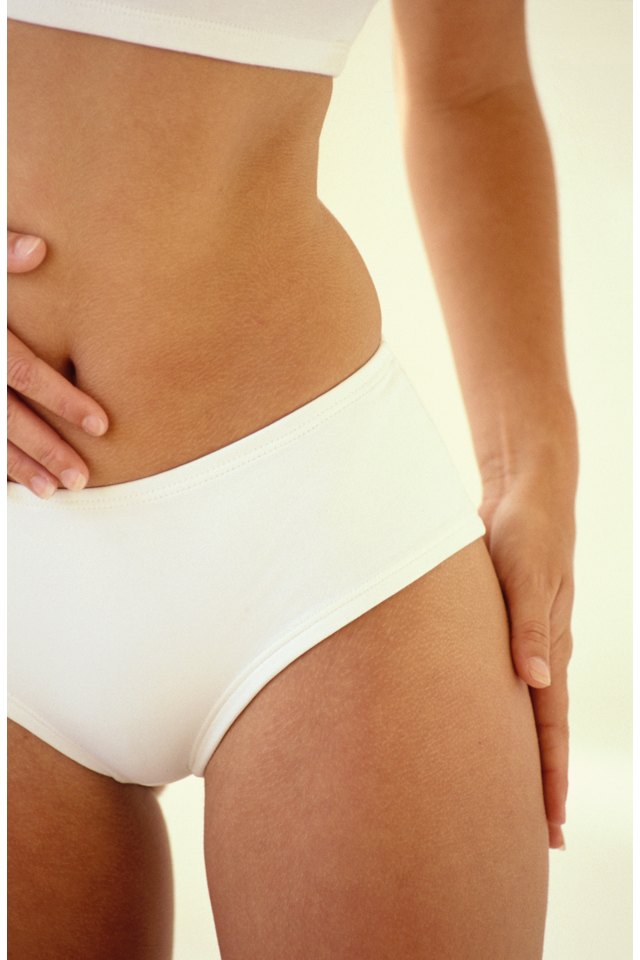Thera Cane Hip Exercises

The Thera Cane is a self-massage tool resembling a shepherd's crook. Along the cane are various knobs that you can use to reach different muscles and that serve as handles for easy manipulation. The Thera Cane is an efficient tool to help you relieve pain and restore mobility to your hips.
Techniques
You can use different techniques to release muscle tension and stretch a muscle using a Thera Cane. For some muscles, a kneading motion works well. For other muscles, it's best to place the Thera Cane on the trouble spot, then engage and release the muscle, while for others the best technique is to place the Thera Cane and maintain steady pressure on the spot for a full minute. Instead of forcing the muscle to stretch, imagine you're getting a massage. Keep the Thera Cane in contact with your skin, relax and let the Thera Cane's leverage do the work. Start with less pressure and shorter sessions and increase slowly. Too much pressure can cause bruising or residual pain.
Kneading the Muscle
The tensor fascia latae muscle responds well to kneading. While standing, find the bony protrusion called the greater trochanter, located on the outside of your thigh bone at the hip. You'll feel the tensor fascia latae muscle just in front of the greater trochanter. Hold the curved end of the cane in your opposite hand with the curve pointing away from your body. Place the knob located at the end of the cane on your tensor fascia latae. Gently move the curved end of the cane to knead the muscle with the knob.
Active Release
Active release occurs when you use the Thera Cane to hold a muscle while you engage and release it. The psoas muscle, for example, responds well to this technique. You can feel this muscle when you bend your hip. Place your fingers in the center of the front of your thigh, along the crease of your hip. Lie on your back with your knees bent and your feet flat on the floor. Brace the Thera Cane with the opposite hand, holding the curved end of the cane toward the ceiling and place the center knob on your psoas. With the Thera Cane in place, bring the knee of the leg you're releasing up toward your chest. From this position, rotate the Thera Cane to turn the knob toward your torso. You should feel a deep ache but not excruciating pain. Maintain equal pressure on the Thera Cane as you exhale and slowly straighten the leg, reaching your toes toward the wall in front of you. Don't force the movement. Extend only to the point that your hip moves freely. Bend the knee and bring it back up toward your chest. Repeat five to 10 times.
Steady Pressure
Steady pressure effectively releases the muscle that makes up the curve along the side of your hip and rear end -- the gluteus medius. To find it, locate the top of your pelvic bone and follow it around the side toward your back. Just below this bone you will feel your gluteus medius. Lie on your back with your knees bent and open the hip out to the side. Place the curved end of your Thera Cane on the gluteus medius, while holding the cane's straight end with the same-side hand. Rock the Thera Cane by pushing the straight end down toward the floor to lift the knob up into your gluteus medius. You should feel a deep ache, but not unbearable pain. To achieve complete release of the muscle, hold the pressure for a full minute.
References
- The Trigger Point Therapy Workbook (second edition); Clair Davies
- Thera Cane; Exercises; August 2010 (pdf)
- The Trigger Point & Referred Pain Guide; MyoRehab
- Save Yourself from Trigger Points & Myofascial Pain Syndrome; Paul Ingraham & Tim Taylor MD
Writer Bio
Cindy Killip is a health and fitness specialist, health coach, author and speaker who has been teaching and writing about exercise and wellness since 1989. She authored "Living the BONES Lifestyle: A Practical Guide to Conquering the Fear of Osteoporosis." Killip holds multiple certifications through the American Council on Exercise and degrees in communications and sociology from Trinity University.
